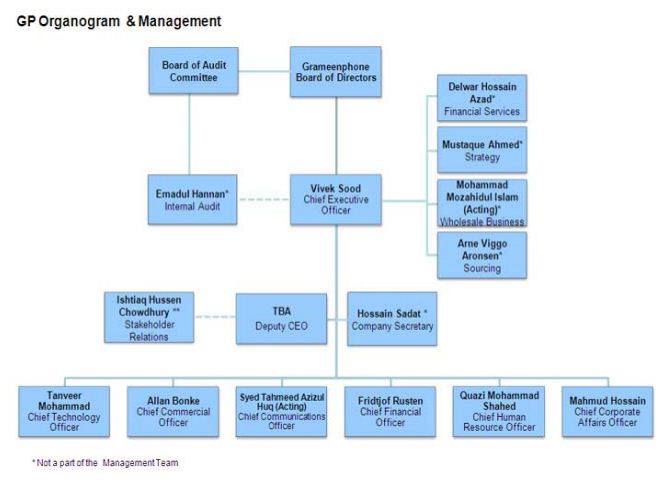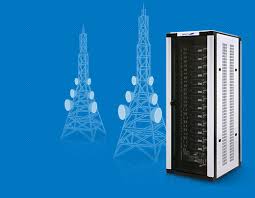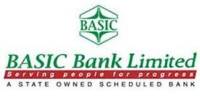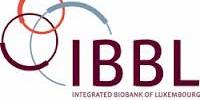This report is combined information of the experience on Grameenphone Limited and what I have learned and came to know about the BTSinvestment Decision and payment procedure from personal learning and shared knowledge. BTSinvestment decision is a major decision for any telecom industry and Grameenphone Limited isnot an exceptional in that case rather to hold its current position or improve the position in themarket Grameenphone has to take this decision more wisely. It is not that easy task to make suchbig decision, there is long process involves in it. Although there is a yearly budget prepared inadvance for investment in this sector each year, but any emergency need can affect thispredetermined budget. Mainly the demand for a new investment occurs for two reasons like toimprove present network quality or to increase the coverage area. Whatever the reason is theinvestment decision cannot be approved without a proper investigation, survey and analysis.Before taking such decision the departments of Market Operation, Finance and Technology haveto work so hard to come up with the ultimate conclusion.
Basically the need can be identified byeither Market operation department or technology department or by both of the departments.After proper analysis by these departments the decision making is leave up to the financedivision after cross checking all the pros and cons if the output from the new investment issatisfactory only than finance department approve the investment decision. Otherwise they haveto look for the alternate decisions of the BTS
investment. Once the decision is made forinvestment then technology department along with the help of other departments makes anagreement paper with the owner of the plot which is selected after site investigation for makingthe BTS plant. And after all the procedures when the agreement is finalized, the construction ofthe plant is started with the enlisted vendors for this task under the supervision of the civilengineer of Grameenphone limited. And the vendors are bound perform the task as per theircontact agreement with the Grameenphone.
Introduction
The people of Bangladesh are now dreaming of a digital Bangladesh. Faster development of telecommunications network coupled with improved quality of service in line with the national development is a must for the fulfillment of the vision and aspiration of digital Bangladesh and also to take her to a position of honor in the community of nations in the 21st century. Mobile phone operators have been playing an important role in this regard. The last decade has brought the first wave of the truly mobile generation, which is built around mobile phones, shortmessaging service (SMS), and portable electronic assistants. Now there is strong evidence to suggest that there is an even bigger wave to come driven by the increasing worldwide technological trend towards mobility and technology integration. This is evident through the plans and strategic directions of many of the major players in this field.
Prologue
Grameenphone ltd is one of the major mobile operating companies in Bangladesh that has played vital role in the mobile operation in Bangladesh. The company has always wanted to serve its customer the best, so they have always focus on the rash of their network quality throughout the Bangladesh. Base Transceiver Station (BTS) are the core element of the development of any telecom network. Moreover, during the 2 months of working experience in Grameenphone ltd I have got the opportunity to know and work in some aspects related to the BTS. Hence the report
is all about how Grameenphone ltd is making its decisions for the investment in the BTS projects and how the invest process completed along with payment procedures regarding the BTS investment decision.
Objectives
Investment decisions in the BTS projects are very important for Grameenphone limited as these decisions can ensure the growth of the company, number of customers and revenue pattern. Basically the objective of the report is to develop a model on where Grameenphone Limited should invest for a BTS considering some factors. Such as,
- Reasons behind the demand of any new BTS.
- The major factors that can influence the investment decision on BTS.
- Does the investment in BTS can actually solve the problem?
- The alternate decisions of not investing in BTS.
After finding the base of the decision making of BTS investment, my further objectives are to find out:
- How the investment process takes place ?
- The associated parties with this investment.
- The vendor enlistment and payment process.
Company Overview
Before Grameenphone inception, the phone was for a selected urbanized few. The cell phone was a luxury: a flouting accessory for the select elite. The mass could not contemplate mobile telephony as being part of their lives.
Grameenphone started its journey with the Village Phone program: a pioneering initiative to empower rural women of Bangladesh. The name Grameenphone translates to “Rural phone”. Starting its operations on March 26, 1997, the Independence Day of Bangladesh, Grameenphone has come a long way. Grameenphone pioneered the then breakthrough initiative of mobile to mobile telephony and became the first and only operator to cover 98% of the country’s people with network.
Since its inception, Grameenphone has built the largest cellular network in the country with over 8000 base stations. Presently, nearly 99 percent of the country’s population is within the coverage area of the Grameenphone network. Grameenphone has always been a pioneer in introducing new products and services in the local telecom market. GP was the first company to introduce GSM technology in Bangladesh when it launched its services in March 1997.
Grameenphone was also the first telecommunication operator in Bangladesh to introduce the prepaidservice in September 1999. It established the first 24-hour Call Center, introduced valueaddedservices such as VMS, SMS, fax and data transmission services, international roaming service, WAP, SMS-based push-pull services, EDGE, personal ring back tone and many other products and services. The entire Grameenphone network is also EDGE/GPRS enabled, allowing access to high-speed Internet and data services from anywhere within the coverage area. There are currently nearly 5.8 million EDGE/GPRS users in the Grameenphone network.
Today, Grameenphone is the leading and largest telecommunications service provider in Bangladesh with more than 43.967 million subscribers as of June 2013.
- Grameenphone has so far invested more than BDT 21,343 core to build the network infrastructure
- Grameenphone is one of the largest taxpayers in the country, having contributed more than BDT 30,876 crore in direct and indirect taxes to the Government Exchequer over the years.
- There are now more than 1600 GP Service Desks across the country covering nearly all upazilas of all districts and 94 Grameenphone Centers in all the divisional cities
- Grameenphone has about 5000 full and temporary employees.
- 300,000 people are directly dependent on Grameenphone for their livelihood, working for theGrameenphone dealers, retailers, scratch card outlets, suppliers, vendors, contractors and others.
Ownership Structure

The shareholders of Grameenphone contribute their unique, in-depth experience in both telecommunications
and development. It is a joint venture enterprise between Telenor (55.8%), the largest telecommunications service provider in Norway with mobile phone operations in 12 other countries, and Grameen Telecom Corporation (34.2%), a non-profit organization of Bangladesh. The other 10% shares belong to general retail and institutional investors.
The technological know how and managerial expertise of Telenor has been instrumental in setting up such an international standard mobile phone operation in Bangladesh. Being one of the pioneers in developing the GSM service in Europe, Telenor has also helped to transfer this knowledge to the local employees over the years.
The international shareholder brings technological and business management expertise while the local shareholder provides a presence throughout Bangladesh and a deep understanding of its economy. Both are dedicated to Bangladesh and its struggle for economic progress and have a deep commitment to Grameenphone and its mission to provide affordable telephony to the entire population of Bangladesh.
Corporate Governance
In the fast-paced world of telecommunications, vibrant and dynamic Corporate Governance practices are an essential ingredient to success. Grameenphone believes in the continued improvement of corporate governance. This in turn has led the Company to commit considerable resources and implement internationally accepted Corporate Standards in its day-to-day operations.
Being a public limited company, the Board of Directors of Grameenphone have a pivotal role to play in meeting all stakeholders’ interests. The Board of Directors and the Management Team of Grameenphone are committed to maintaining effective Corporate Governance through a culture of accountability, transparency, well-understood policies and procedures. The Board of Directors and the Management Team also persevere to maintain compliance of all laws of Bangladesh and all internally documented regulations, policies and procedures.
Grameenphone is a truly transparent company that operates at the highest levels of integrity and accountability on a global standard.
Organization Structure

Division at Grameenphone Ltd
Grameenphone Ltd. has approximately 6000 employees working at different levels of organizational hierarchy. There are 9 functional departments engaged in managing these employees‐ with the aim to meet organizational objectives. Grameenphone follows a mix of centralized and decentralized decision-making process‐where the top management mainly takes all the strategic decisions while the functional managers have flexibility to take decisions by themselves on a day-to-day basis. At Grameenphone the Managing Director is assisted by 9 Senior Executives who are heading different departments in the strategic decision making process. The departmental names of Grameenphone are given below:
- Corporate Affairs Division
- Customer Service Division
- Finance Division
- Human Resource Division
- Information Technology Division
- Internal Audit Division
- Internal Control Office Division
- Marketing Division
- Network Division
- Public Relation Division
- Sales Division
Grameenphone follows a 3‐layer management philosophy in Bangladesh. These are Directors, Managers and Officers. The CEO is the top most authority of all the levels. Directors are the departmental heads that are responsible for the activities of their departments. Managers have the authority next to directors. These two layers represent the management level of Grameenphone. Officers are the next persons to stand in the hierarchy list. They are the typical mid‐level employees of Grameenphone organizational hierarchy. These officers are responsible for
managing the operational activities and operating level employees.
BTS Investment Decision and Payment Process
Overview of the BTS:
Base Transceiver Station (BTS) is the major part of any Telecommunication infrastructure. The increase number of this BTS ensures the higher quality service of network in the surrounding areas under its coverage. So in the expand decision of any telecom company investment decisions in BTS get the highest priority. Because depending on this investment decisions the number of customers of that telecom company and its revenue pattern will vary.
Grameenphone Limited also takes this decision in such way that can ensure its growth in number of customer and revenue pattern. Currently, in all over the Bangladesh Grameenphone Limited has at least 1 BTS in every Thana of Bangladesh. Major Parts of a BTS Site are:
- BTS- the core element of the site which cannot be shared with other operators
- Tower/pole, Shelter/ room, Battery, Generator, rectifier- which can be shared with others if needed.
Budget for BTS Investment:
In every year at time of annual budget preparation for Grameenphone, the allotted amounts are fixed for the BTS investment for the upcoming year. If in the upcoming year Grameenphone wants to spread the network more aggressively then the amount will be more than the previous year. Otherwise it keeps almost similar amount on an average for the BTS investment every year. Generally Grameenphone does not exceed the budget for investment. But if in case there are any serious crises or emergency need for BTS, Grameenphone make the decision for cross the budget or not by holding the meeting and group discussion among the Top level management.
Reasons behind the Demands of new BTS:
Generally the demands for any new BTS arise for the two major reasons. These are:
- To increase the indoor or outdoor network coverage and
- To increase the capacity of current network coverage
The first reason, increase demand for the improvement of network coverage is generally identified by the Marketing Division. From their surveys of the customer satisfaction, regional offices, or customers complains they come to know about the weak network coverage. If the problem is beyond then certain limit then Marketing Division informs the technical department about the rising complains and asks to take necessary steps.
The second reason, demand for improving the capacity of the current network coverage is identified by the technical department itself. After getting finding the demands for the new BTS the Planning department of technical division goes for an analysis and makes a draft proposal considering the cost and revenue to the Corporate Finance and Treasury for the approval of the project.
Factors Influencing the Investment Decision:
Basically the draft send to the CF&T from Planning Department is more or less an assumption of the future profit from the investment. But the planning cannot get in to the in-depth analysis regarding the investment. So when CF&T gets the proposal it goes for an in-depth investment from the information collected through the MD department and Technical department and analysis of the proposal for making the decision flawless. So after getting the proposal at first the proposal is evaluate with some factors. Such as,
Demography of the Proposed Area for the new BTS:
The demographic condition of the proposed area has large influence on the investment decision like
Population Size :
The proposed are for BTS may have huge number of population which may seems lucrative for future profit coming from that area. But in real the population size will not matter as much as finding out the actual number of target customer from that population is important. Like the target are may have 10000 of population but among them only 3% are my target customer. Then investing in that area will not prove a wise decision. On the other hand if the scenario is totally vice versa, target customers are filling a large portion of the population then investment decision will be a profitable one.
Age Break Down:
The target customers of Grameenphone belong to the age group of 15 years to 65 years. If the numbers of potential customers are large in numbers who are out of network in the proposed location for BTS, then the investment decision should be must. But if the numbers are not vivid like maximum people above 65 years and below 15 years then there could be taken an alternate decision of investment of BTS.
Per Capita Income of the People:
Per capita income of the people is one of the major criteria for evaluation for investment is any new BTS. Because the proposed area may have large number of target customers but they do not have the enough capacity of income to spend it on the mobile. In that case the investment decision will not be profitable. Like a area around Rangpur where target customer can be high but per Capita income is not enough to spend on mobile. But if the existing customers are large in numbers then the investment decision can be taken.26
Number of Community Location:
If the community locations such as school, college, university, office, shopping malls, mashjidsetc are large in number then the place will require a strong network as the number of user are large in number then the investment decision should be taken. It can enhance the chance of increase the number of new customers if the network and services are satisfactory in that region. But if location does not have so much social gathering then an alternate decision can be taken for the few customers.
Completion Analysis:
Before any new investment the competition analysis is must. Because base on this analysis the success of the investment decision can vary. Some major criteria’s for evaluating the competition of the proposed area are:
Number of Competitors at that Area:
If the number of the competitor are small in number in that proposed area the investment decision should be taken to grave the potential market considering the other factors. But if the competition is high in that area then also the investment decision should be taken to grab the competitor’s customers by providing better service and network.
Position of Market Share of the Area:
Market shares show the position of Grameenphone subscriber in that particular area among the competitors. If the market share is high at the proposed location but network coverage is poor than the investment decision should be taken. Otherwise it can be the cause of lost of the exiting customers. But if the market share in that particular location is not satisfactory then before taking the investment decision the original reasons for the low market share should be found out and the steps should be taken according to the problems. And it may not require for a heavy amount of investment of BTS always. Like,

Market Penetration:
It means what is percentage of Grameenphone subscriber of total percentage using mobile phone at that particular region. Like 60 % of population is using mobile phone at that particular area and 35% of them is Grameenphone subscriber. So market penetration is 35% for Grameenphone at that area. If this number is low again need to find out the actual problem to come up with ultimate solution. But if the number is high but still there is poor network coverage then definitely need to improve the network coverage of that place.
Existing Network Quality of the Area:
To find out the existing network quality is another important tool to determine whether there is any need for the increase of the current BTS capacity or not. There are two criteria to find it out. These are:

Like network coverage of Grameenphone is very poor in Cox’s bazaar or Sent martin’s island as well as number of customer are also few or there can be a huge demand of networks only in few seasons. Rest of the time of the year demand is below average. In such cases, such big investment decision will not be profitable; hence the alternative decision s of BTS investment will be more appropriate here.
After considering the above stated criteria’s, then the second steps requires the analysis of all the direct, indirect costs and revenues, taxes etc related to the project considering all the small details and find out the ultimate Net Present Value and Internal Rate of Return to find out whether the project will prove actually profitable or not in the long run. If the results satisfactory only then the projects are approved for the further process otherwise the project is stopped there and asked to take alternate decision in spite of investment of any new BTS project. As the ultimate base line of any project is profit earning. If the project fails to generate profit then there is no meaning to engage such big amounts it those projects.
Alternatives of BTS Investment:
If the investment decision of new BTS is not profitable but still there may be some need for improve network condition or otherwise there might be chance of losing customer. In such scenarios the alternate decisions of not investing in BTS can be taken. Like,
IBS:
Investment in IBS inside Building Solution which is also known as micro BTS can be an alternate solution at less investment. It has the power to increase the network capacity lower than a BTS but higher than a Repeater. This can extend the network capacity at Indoor as well as at some level to the outdoor also.
Repeater:
Repeater is another alternate option of not investing it BTS. It has the lowest capability to extend the network than BTS and IBS. It can only ensure the strong network support at indoor. And sometime the capacity is limited to a floor of a building. It can be used for only the network problems inside a building. it grabs the signal from the nearest BTS and pass it on the other BTS where network condition is weak.
Site Sharing:
If it is not possible to go for a whole BTS site for the network improvement than, site sharing can be another option. Like if in an outdoor where network is weak but a whole site investment is not profitable than company can take the rent of other operator’s BTS site and install only a BTS over there. It can solve the problem as well at lower investment rate.
Investment Agreement Procedure:
After receiving the approved project by the CF&T, planning department hand over the project to Site Procurement and Infrastructure (SPI) department of technical division for the further process. Then the SPI department sends a team of 4 members to the site for the survey and other details. Generally this team has members fromFrom
Planning Department:
For monitoring the whole procedure. Generally planning department set the promising location for the site via GPS system. But often they found that the location may not be suitable for the site at the field visit. In such condition whatever the alternate decision is taken by the team, to monitor and allow that a member from the planning team joins the team.
From SPI Department:
For identifying the most appropriate location for the site. If the pre set location is not appropriate for the site like, it can be pond or EPZ area then they cannot take the place. So for taking an alternate location from which the site will get maximum advantage a member of SPI department joins the team. And the alternate location can be
- Land: that will be called as Green Field site or
- A building: that will be called a roof top site.
From Civil Department:
For finding out infrastructure detail and identify the right building for the site. When the team a found a suitable location then the member of the civil department find out the condition the location. Like, if it is land then what is its condition, situated in flooded area or not, if yes then what could be the solution. Or if it is a building then what is the condition of the building, is the building strong enough to take the load of the BTS site, in which part of the building the site can be made etc. if the building is strong enough then a room can be made under the tower, if the
building is not strong enough then a shelter can be made.
From Finance Department:
For the negotiation of the rent and other issues. When all the other team members are satisfied with the location the member of the finance department, meet with the owner of the location for further negotiation. If it is a green field location then Grameenphone generally purchase the land for the site. But it is not possible all the time. As the land can be a government land or the owner may not want to sell the land in such cases, the want to take the lease of the land. Even taking lease is not possible then they try to take Land for rent. Even the owner is not ready for the rent then they drop this location and found another one. But if the owner is ready to sell / lease/ rent then the further negotiation process proceeds according to the approximate value of the land of that area. And after the negotiation the value for the rent/ lease or sell is set.
Once the rent is set, then the team made a Memorandum of Understanding (MOU) with the owner of the land. In the MOU all the clause and policies are written in detail. Like detail information of the owner, detail description of the property, rent, payment process( generally yearly), advance amount, permission for making shelter/ room on the property, utility etc. after that the team made a Technical Site Survey (TSS) report holding each and every single detail of the site survey for the planning team. A TSS report includes the

Once the TSS and MOU is made, these are send to the SPI department for making the internal approval note and meeting minutes. Which includes the detail information regarding- Objective of the projects
- Summary of all the terms and conditions- demised premise, term of tenancy, commencement date, expiry date, utility, termination clauses, etc.
- Summary of negations and payment terms- negotiation committee, monthly rental, payment schedule, and further payment terms etc.
- Justification details
- Terms and condition of the approval note
- Recommendation of approval
After preparing these reports, these are approved by SPI department according to the Limit of Authorization (LOA). Then the reports are sent to the accounts payable section finance division for further process. After getting the reports finance verify the technical justification, Meeting minutes, and approval notes. Then they open a vendor maintenance form with the detail information of the owner of the property and cost center creation form with the detail information of the site. Then finance compliance determines the vat, tax of the site. Like If the usage land is greater than 300sqf then vat is applicable (after 10th January 2011) and If the usage land is greater than 150sqf then vat is applicable (after 10th June 2010). In addition, tax will be applicable on Roof Top, Indoor, and Microcell, which is deducted from site owner yearly rant, on the other hand, if the site is Green Field then the tax will be paid by Grameenphone.
After determining the vat and tax of the site, the information are inputted into the System and create a vendor invoice for determining the payment sector. Generally these payments are done under the heading of Site and space. Then printed invoice are sent to the LOA for approval.
- If the invoice amount is BDT 0 to 10,00,000 then it is approved by the functional manager
- If the invoice amount is in between BDT 10,00,001 to 1.5 mil then is approved by the head of the unit
- If the invoice amount is more than BDT 1.5 mil then it is approved by the chief financial officer.
After the approval of the invoice it is send to the treasury section for making the checks. In the treasury section they deduct all the vat, tax and make check of the net amount and forward this check to the SPI department. Then the SPI will meet again the property owner with check of advance payment and 2 copies of agreement paper. After the signing the agreement paper by the both of the parties the agreement will be valid and the rental period will be started.
Processes of Making the Site:
Once the agreement is made, planning department takes over the roof of the building or the land. Then planning department decided whether to make room or pre fabricated shelter depending on the property condition. In the mean while engineer from the civil departments also check the building status and prepare the layout. Then the site is over to the civil department for the further process.
After that civil department creates Purchase Requisition from the vendor, list and send the PR to supply chain Management Department. The PR consists of all the valuable details regarding the site construction. And it is clearly stated in the PR that what will be the maximum limit of the payment for the vendor. Then Supply Chain Management selects the vendors from the vendor panel, convert the PR to Purchase Order (PO) and send the PO’s to every selected vendors. Again, the PO has all the details including time duration for the construction work, who will be the engineer in charge (EIC) etc. After that, the selected vendors will go to the site and start the construction work under the observation of the EIC. The EIC will monitor the whole work and if found any work unsatisfactory, he has the right to stop and make them do it again. Generally, vendor gets maximum 45 days to complete the whole site.
After implementation of all the equipments the sites becomes on air and civil department handover
it to the Regional Office.
Cost and Payment Process of the Investment
The cost of the BTS sites are divided in to two partsPaymentof Operational Expenditure:
After getting the proper documentation the first check will be disburse through the SPI department. But from the second issue all checks will go to the Regional offices from the Treasury department via OSS department. Then the RO will deliver the checks in the respective sectors.
Payment of Capital Expenditure:
Price of Land:
If any private land is selected for the site Grameenphone mainly purchase the land. After the negotiation of the land Grameenphone purchase the land following the general procedure of land purchase. And the payment can be made on check.
Equipment Purchase and Installation:
The equipments are export from the particular vendors that Grameenphone has for each segment. And the whole purchase and payment process is held on LC. And the associated banks with Grameenphone for the LC are- Citi NI, SCB, and EBL. But the payment of the local vendors are making through the One Stop Service (OSS).
Payment for the Civil Work:
After the work completion the vendor submit a draft invoice to the OSS department. After receiving the draft invoice OSS will input the bill in the system under the particular vendor detail. And after checking SAP will forward the bill to the respective department from where the PR was issued. And for completing this task OSS will take maximum 2 days thus this civil work bill will go to the civil department.
After that OSS again check the draft bill scan and store the information in the SAP and send the bill of valid reasons to the vendor for sending the final bill. Again, OSS gets only 1 day for doing this task. After getting the draft bill vendor will send the final bill to OSS again. And they will get 3 days for sending the final bill after getting the draft. Then OSS will send the final bill to the Accounts payable division of finance department. After getting the bill accounts payable will verify the final bill and the relevant documents. If there is any need they will communicate with the compliance department for the explanations. This process may maximum 5 days.
Recommendations
Grameenphone limited is following a long but sound system for making the investment decision and the payment process of the BTS, which is making the whole system easier. Each department has their own work, so for a single project there are multiple departments are directly associated with it. This is helping to reduce the working chaos as well as smooth the process. It is not easy to go through the whole process in such a short time but yet after
analyzing the whole process there are only few spaces where I can suggest them for reconsideration. Like,
• At the time of analyzing the factors before considering the investment decision,Grameenphone wants to invest in such places where competition is high as well as Grameenphone’s market position is strong. The issue is to snatch competitor’s customers. So before going with high investment set up new BTS plant in such areas Grameenphone should at least ensure that it will increase its customer. For that Grameenphone can invest in the new facilities, advertisements before such big investment. Otherwise it can go with the alternate investment decision.
• In the mobile industry of Bangladesh currently the operators are only allowed to share the BTS site with each other. But they are not allowed to share their BTS with each other. So if a operator faces network coverage problem the it can rent other operator site and install its own BTS. And local roaming is a facility which allows the operator to
share their BTS also. But this facility is right now not present in Bangladesh. So if Bangladesh government allows the mobile companies for local roaming facility it can reduce the BTS investment cost. So for that Grameenphone Limited should take some initiatives for the government approval. Because this steps may bring huge returns for
the company in future.
• Another issue I found is in the site selection process. if the location selected for the BTS site is on the EPZ’s or Government plot than it becomes hard to take the lease. Hardly any times they got the permission for set up plant but often they don’t get the permission. As a result they have to drop the plan for investing in those areas.
• Although Grameenphone just introduce the OSS department for handling the payment and bill to overcome the problems from the previous system yet there are also some issues in this payment process which can be improved. Like whenever a vendor submits an invoice, Grameenphone gives them a unique tracking number. So whenever the vendor needs to know his current status, payment condition, approved bill amount or any other queries he has to call to the OSS department and then the OSS department informs them about their status. Or OSS sends email to the vendor about his status. But it is a time consuming process. As vendors have to believe the OSS and phone lines may busy for long hours as well as vendor may not receive the mail send by OSS. So to solve this problem Grameenphone can open a new portal or enhance a option on their current portal for the vendors. So that when ever vendors need updates, they have to just log in to the web site from anywhere. It can save both of the company and vendors time.
Conclusion
At the wrapping up it can be said the Grameenphone limited has working hard to grab the Bangladesh mobile market. But due to the high competition in this industry it is still standing at the third position. But Grameenphone is fighting in competitive spirit and ready to get back its previous position or even stronger than previous with the new packages and services. At the same time, it is trying to improve its network condition. But for that the company is not making the decision in hurry, rather they are following a sound and in depth investigation before taking
the final investment decision. After taking the decision t they also follow a complete procedure with the help of other departments for making the agreement, vendor enlistment, as well as civil work.
Everywhere teamwork is visible which helps them to come out with better and profitable outcomes. Again, for the payment for the expenditure they have come up with their new One Stop Service that helps them to avoid all the commotion regarding the payment process. These all are helping Grameenphone to come up with a new face to its customers. Yet there are some little scopes to improve their process in the BTS investment decision, implementation and payment. If they consider those issues, they can see more bright future.
















